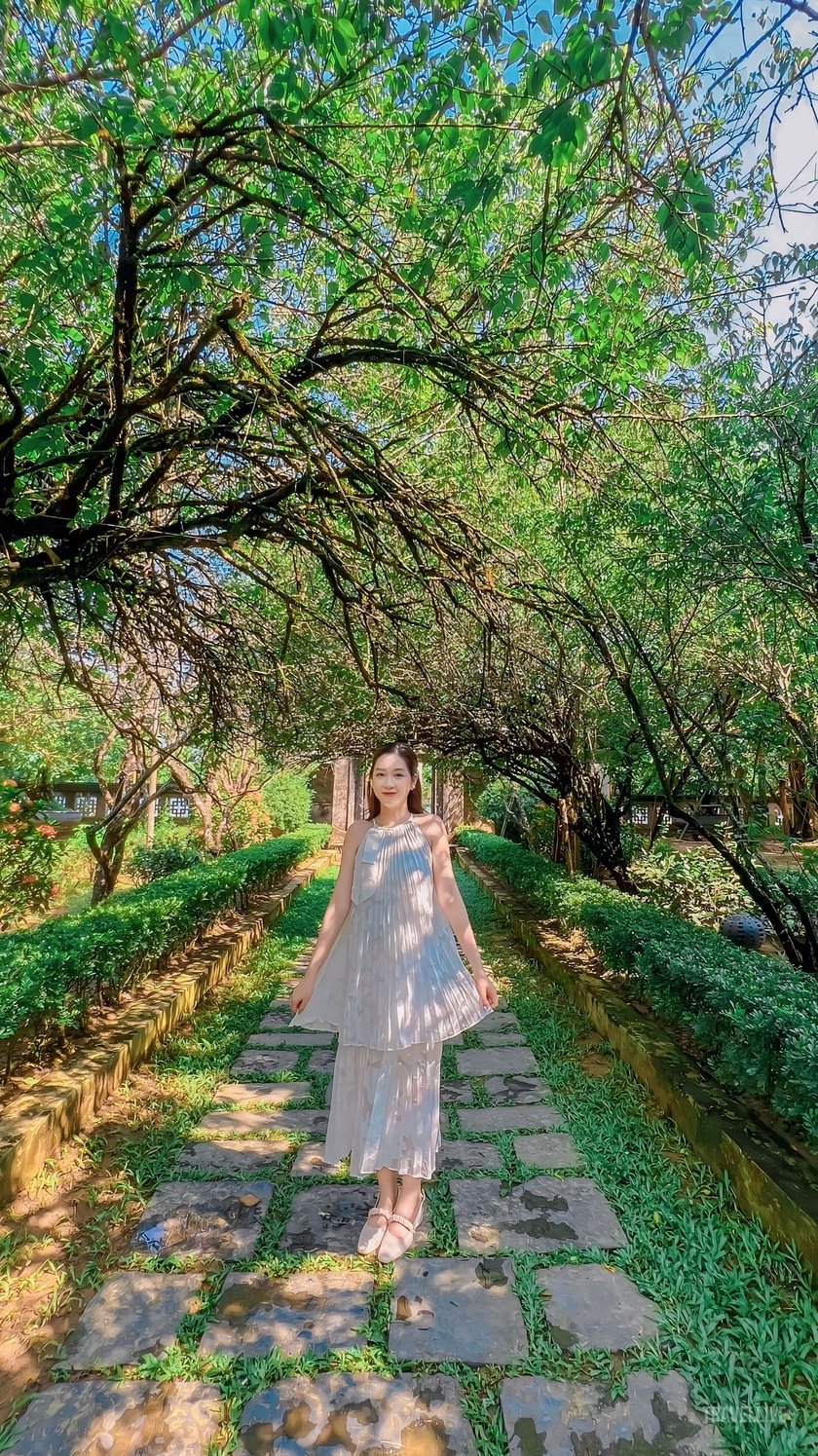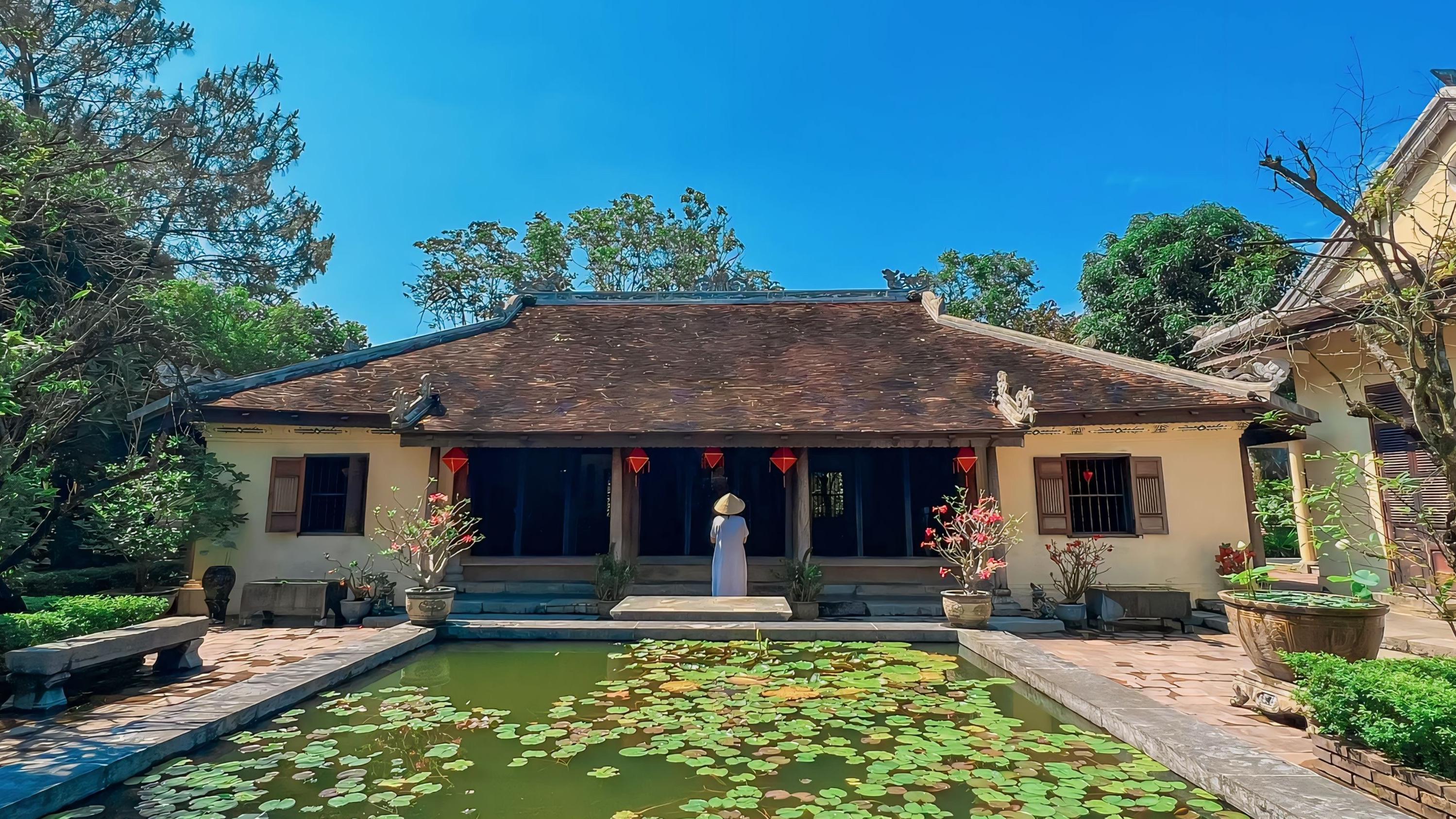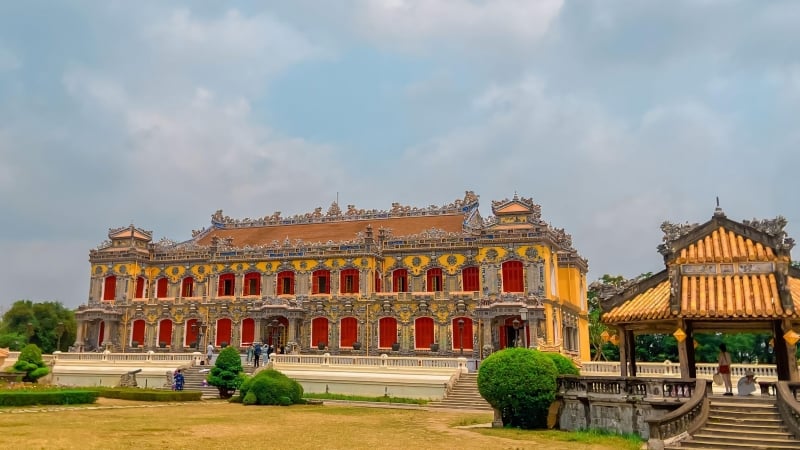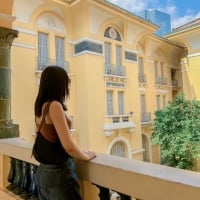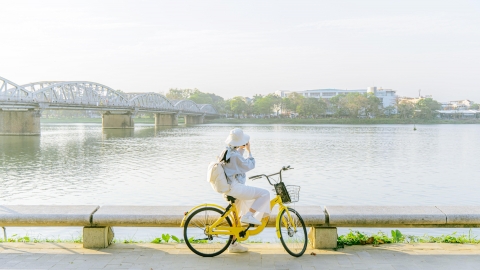Talking about the chance visit to An Hien garden house during my recent trip to the Central region, I'm afraid it's not entirely true. Two years ago, when watching the movie "Em va Trinh", I was attracted by the peaceful and ancient beauty of the house where the two sisters Bich Diem and Dao Anh lived. At that moment, I secretly promised myself that if I had the chance to return to Hue, I would definitely take the time to explore this typical garden house architecture.
And then, fate brought me back to the ancient capital after two nostalgic years. On this trip to Hue, I was determined to make my old dream come true. After visiting other famous places such as the Imperial City, An Dinh Palace, Tu Hieu Pagoda, Phu Cam Church, Thuy Xuan Incense Village, Dong Khanh Tomb... I spent an afternoon to visit An Hien Garden House and Thien Mu Pagoda.

An Hien garden house is located on the North bank of the Perfume River, in Kim Long area.
An Hien Garden House - The quintessence of Hue architecture
An Hien Garden House is located on a campus of 4,608 m2.2with a balanced square shape, the main facade faces south. Opposite the house, the poetic Huong River winds like a soft silk strip, adding to the charming landscape painting.
Listening to the tour guide's sharing, I understood more and more the special meaning of the name "An Hien". The two words "An Hien" seem simple but contain a deep wish of the homeowner, which is the wish for a peaceful life under the ancient roof.
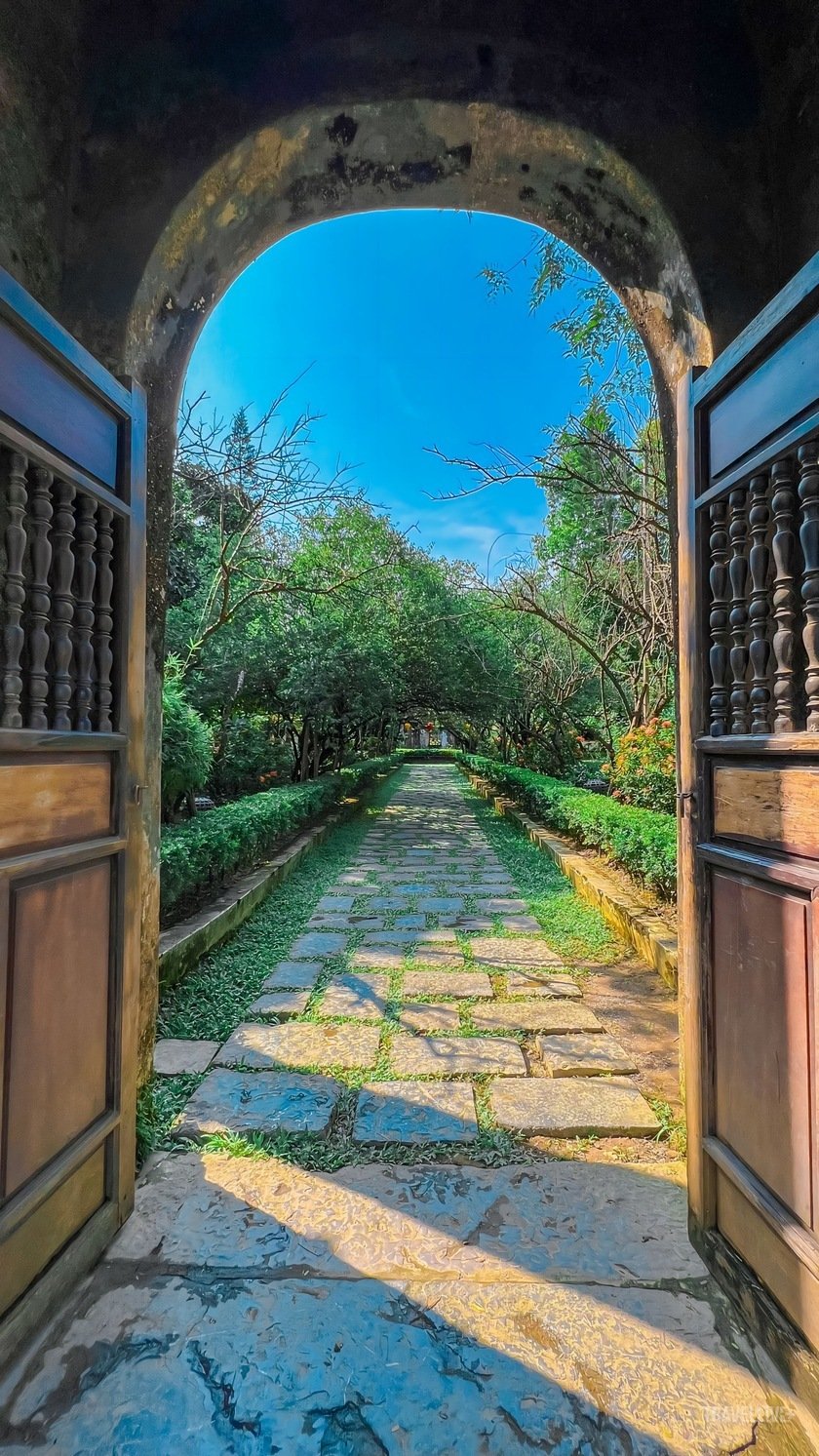
An Hien garden house was once chosen as the setting for a film about musician Trinh Cong Son.
As soon as I stepped through the ancient mossy arched gate built with lime bricks, I felt like I was entering a completely different world. I seemed to feel the peaceful and quiet atmosphere that enveloped this place. The gentle, delicate beauty of Hue garden house architecture appeared before my eyes, holding me back with its elegance and grace. The chirping of birds and the rustling of leaves seemed to blend together to create a melodious, gentle melody.
An Hien's garden is surrounded by cool, rustling green trees, creating a peaceful and quiet atmosphere. Along the 34-meter long dirt road leading to the garden house, I admired two rows of tall green trees intertwined with each other, creating a poetic and vibrant scene.

The ancient mossy arched gate was built with bricks and mortar of An Hien garden house.
After passing through the gate, I came across an ancient screen decorated with the word “Tho” - a symbol of longevity and luck. This screen plays an important role in the feng shui of the garden house, helping to prevent bad things from entering the house.
Continuing inside, a rectangular lotus pond built according to the feng shui of ancient garden architecture opens up. The lotus pond not only creates a highlight for the landscape but also carries the meaning of elegance, purity and peace.
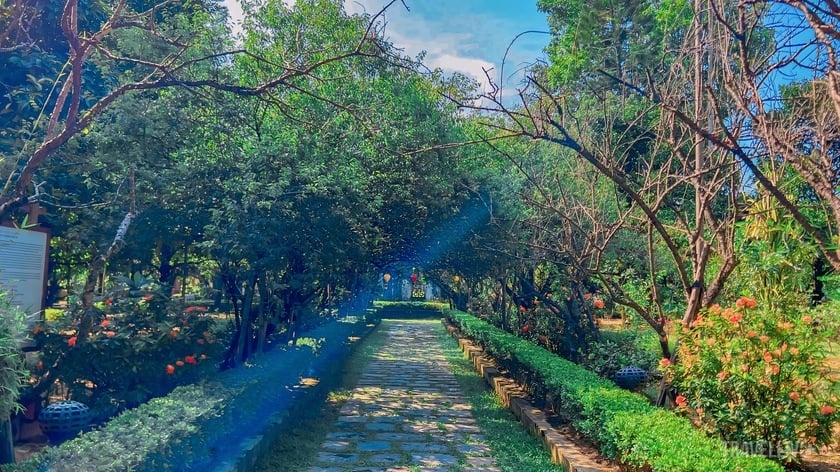
The dirt road is about 34 m long leading to An Hien garden house.
The tour guide shared: “The screen is to shield and protect the house from bad things from the outside. Standing outside, you cannot see inside, but sitting inside, you can see outside, even see the other side of the Perfume River. And feng shui always goes hand in hand, if there is a screen, there must be a lake. The lake gathers the spiritual energy and essence of heaven and earth to ward off yang and support the ancestral altar in the middle of the house. These are two indispensable feng shui objects in Hue garden house architecture. However, An Hien garden house is more special because of the appearance of the screen, which curves softly like the dragonfly-wing hat of a military mandarin.”
In addition, surrounding the house is a large garden with all kinds of fruit trees from all over. Under the green canopy, winding paths lead me to explore every corner of the garden. Rows of trees laden with fruit such as sweet lychee, fragrant mangosteen, golden jackfruit, cool grapefruit, bright red dragon fruit... all are carefully planted and cared for.
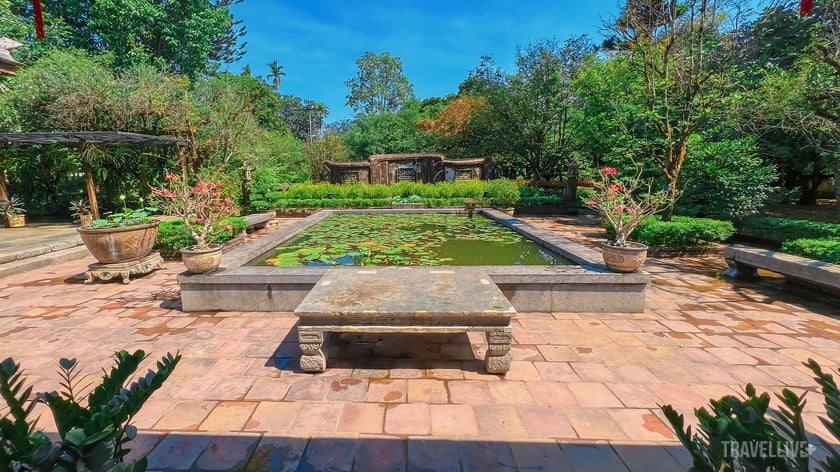
The screen and the pond are two indispensable feng shui objects in Hue garden architecture.
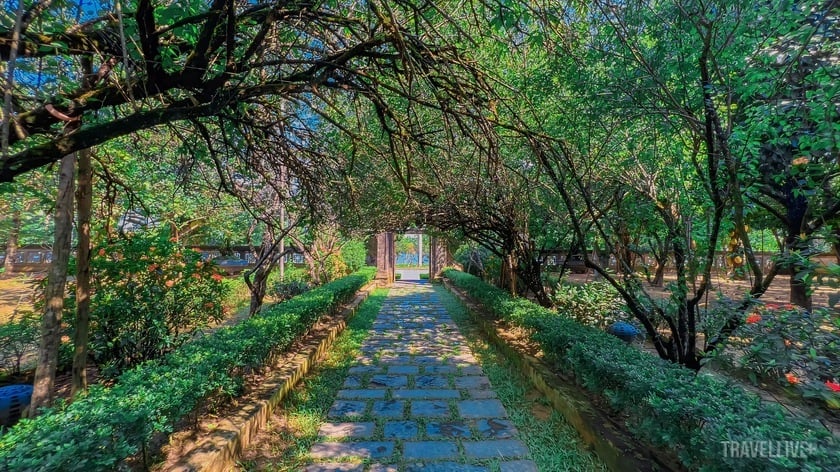
The small tree-lined road leads to An Hien garden house.
Dreamy Hue hidden in every corner of An Hien garden house
Standing out among the green garden, the traditional ancient house is 135 m wide.2The house stands tall and majestic, bearing the typical architectural mark of Hue's traditional houses. The house is designed with a structure of 3 main rooms and 2 side rooms, showing a harmonious balance and following the ancient rule of "warm in winter, cool in summer".
The main room is located in the center and is solemnly decorated, a place to worship ancestors and gods. The two rooms on the side are used for receiving guests, family gatherings and common activities. The two wings of the house are clearly divided, the left side is the living area for men, the right side is the living area for women.
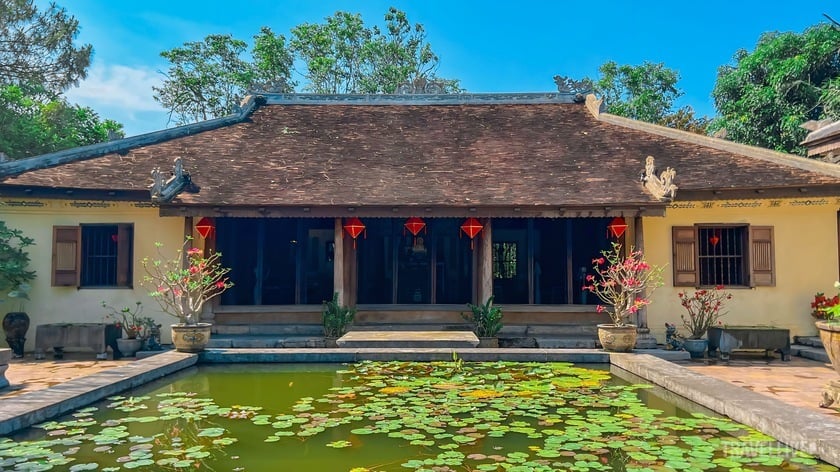
The subject is a stilt house located in the center of the garden, 135 m2 wide.
The house frame is made entirely of precious wood with the main column system carved with traditional ancient patterns. The meticulous and graceful carvings show the talent of the ancient carpenters, and at the same time bring luck and peace to the homeowner.
The roof is covered with many layers of yin-yang tiles, stacked tightly together, creating solidity and effective waterproofing. The top of the roof is decorated with lotus flowers symbolizing elegance and purity, and the two sides of the roof are decorated with dragons symbolizing power and majesty.
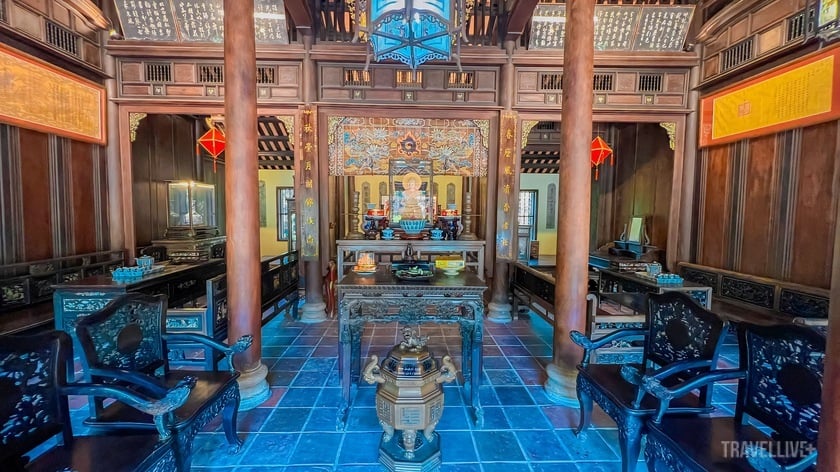
The middle room is a place of worship.
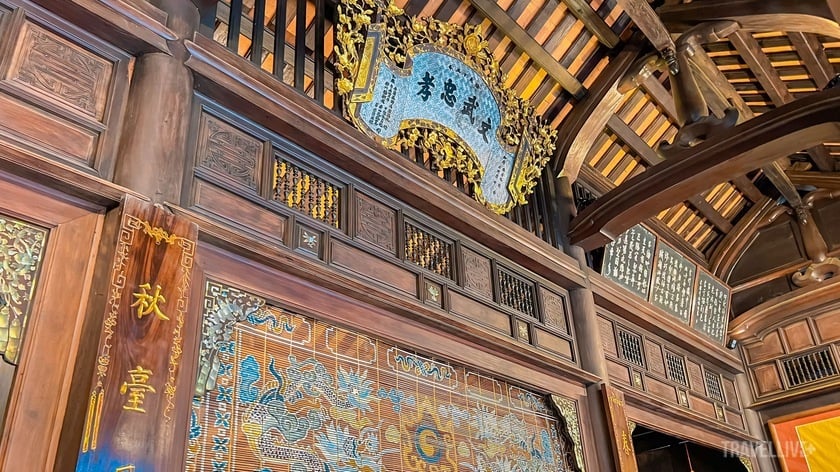
The horizontal plaque with the four words "Van Vo Trung Hieu" by King Bao Dai
Entering the ancient space of the house at An Hien garden house, I felt like I was taken back in time to the cultural and historical values of the Nguyen Dynasty. This place preserves countless precious ancient relics, which are proof of the prosperity and quintessence of a golden age.
The most prominent highlight is the horizontal plaque with the four words “Van Vo Trung Hieu” hanging solemnly in the middle room. This horizontal plaque was given to the homeowner by King Bao Dai in 1937, as a compliment for the noble moral qualities and great contribution of the family to the royal court.
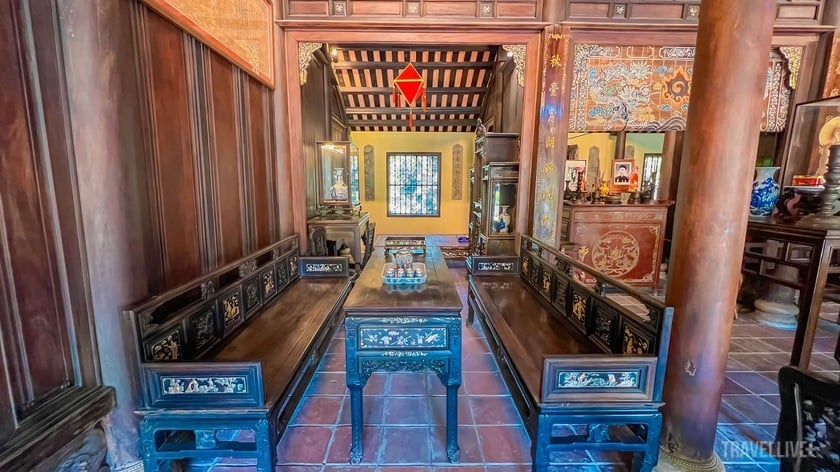
Ancient wooden tables and chairs in the traditional house
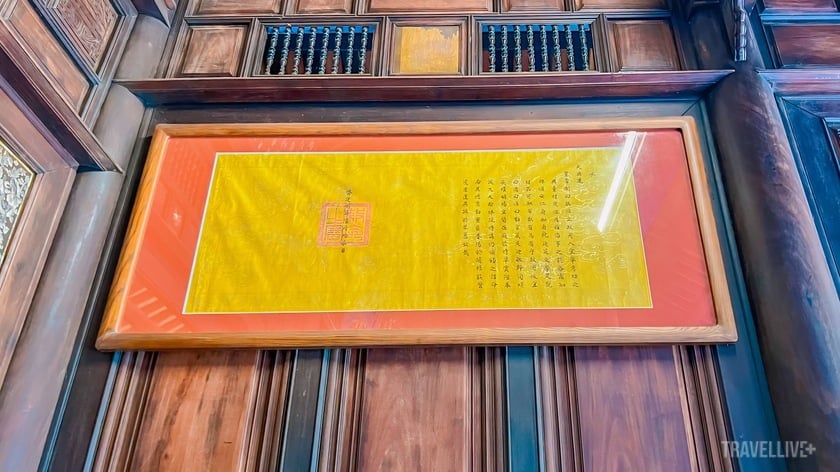
Inside the house there are many precious relics of the royal court.
In addition, the space of the house is also decorated with sophisticated and precious antique furniture. From the wooden tables and chairs with delicate carvings, the sparkling mother-of-pearl inlaid cabinets, to the tea sets bearing the mark of time, all exude an ancient and luxurious beauty. All objects are arranged neatly and harmoniously according to the feng shui principles of traditional Vietnamese architecture, creating an elegant and graceful living space.
After admiring the ancient beauty of the house, we gathered around a cup of fragrant tea, listening to the tour guide enthusiastically tell about the long history of An Hien garden house.
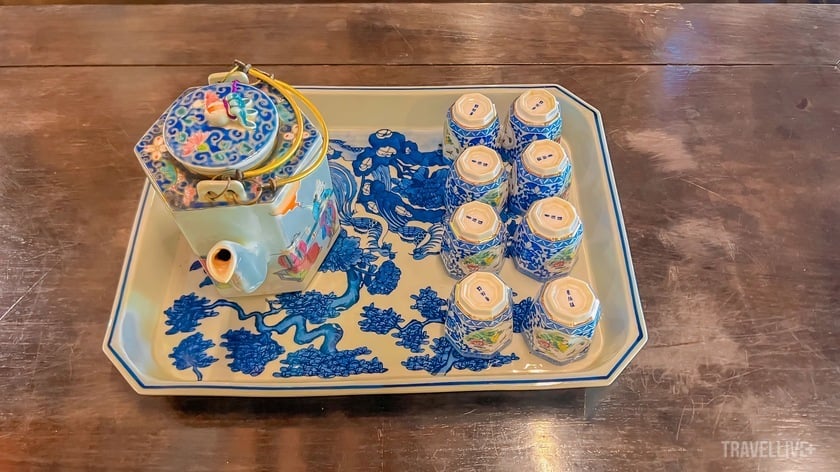
Tea set from the late 19th century.
According to the tour guide, An Hien garden house was built in the late 19th century, and was once the residence of the 18th princess of Emperor Duc Duc. Later, in 1895, this property was transferred to Mr. Pham Dang Khanh, the son of a high-ranking mandarin during the Gia Long period.
In 1920, Mr. Khanh sold the garden house to Mr. Tung Le, a wealthy man famous for his benevolence. By 1936, the garden house officially belonged to the Governor of Ha Tinh province - Mr. Nguyen Dinh Chi. After Mr. Chi passed away in 1940, his wife Dao Thi Xuan Yen continued to manage and preserve the house.
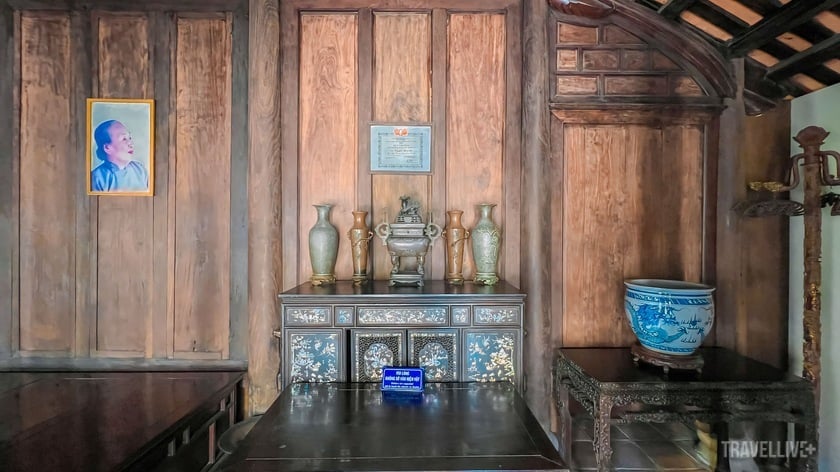
The house preserves the memorabilia of Mrs. Dao Thi Xuan Yen.
Later, An Hien garden house was inherited by daughter-in-law Phan Thi Hoang Oanh and four grandchildren. Through the ups and downs of time, the garden house still retains its ancient and peaceful beauty, becoming an attractive destination for tourists when traveling to Hue.
